Just 45 miles northwest of Atlanta, the Savoy Auto Museum in Cartersville gives visitors an appreciation of auto history through the years. Opened in late 2021, Savoy joins sister museums, the Tellus Science Museum, Booth Western Art Museum, and Bartow History Museum, in the area perfect for a quick day trip.
Named after the abandoned 1954 Plymouth Savoy found on the property during construction, the museum boasts over 100 autos and multiple rotating exhibits. Visitors can see the old Savoy outside the sleek 65,000-square-foot white building splashed with pops of red.
Early Cars
If you’re like me, you probably thought Henry Ford created the first mass-produced vehicle in the US with the Model T in 1908. Actually, Ransom Eli Olds preceded him several years with the Curved Dash Runabout, selling over 400 in 1901. Resembling a horseless buggy, the gas-powered 1903 model is the Savoy’s oldest car in the permanent collection.
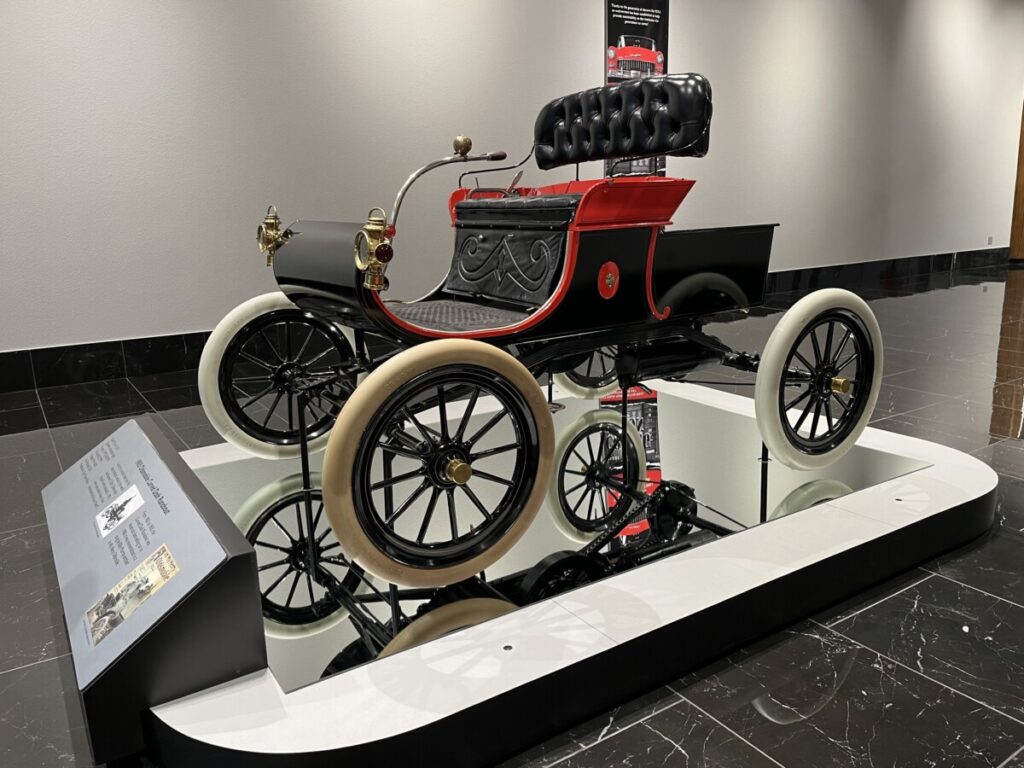
After walking by a replica of the famous Georgia Tech Ramblin’ Wreck, we entered the Main Gallery space with the first special exhibit. Filled with high ceilings and plenty of windows, the exhibit hall showcases autos as works of art.
Fast Brass Special Exhibit
While the aforementioned Olds Runabout topped at only 20 mph, many early manufacturers built cars with one thing in mind – speed. Just like in Europe, auto racing became a popular sport in the US. Early races ran from city to city. Crank started by hand, most race cars featured two seats, one for the driver and the other for the mechanic.
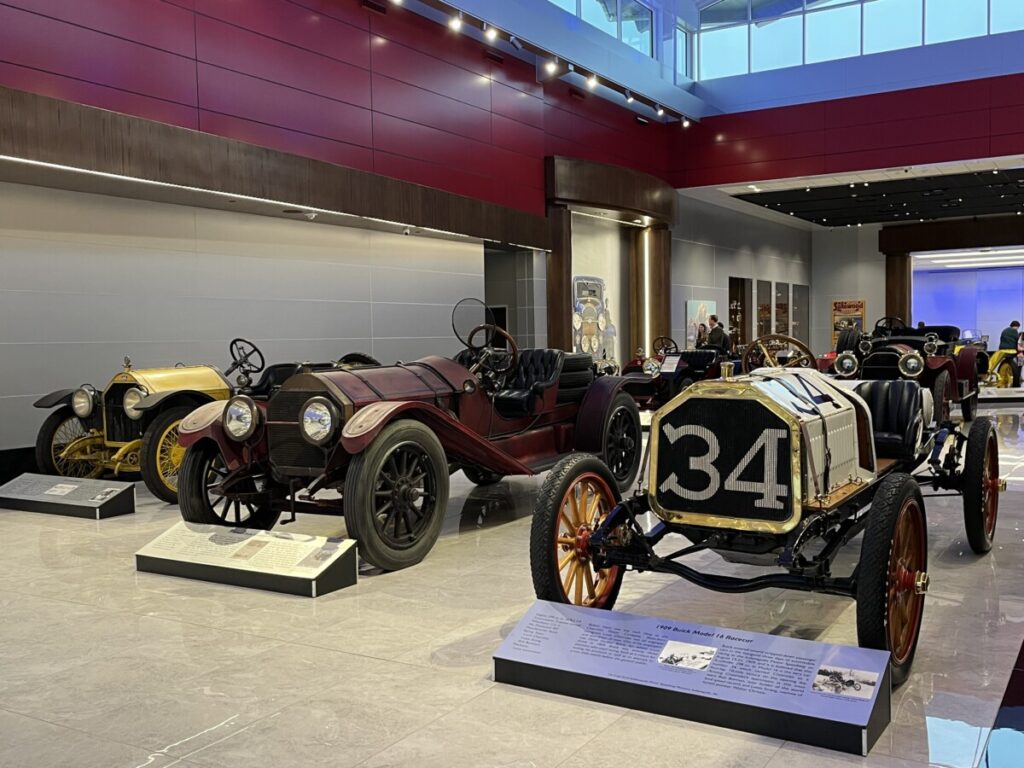
In some of the cars, the steering wheel and pedals sat on the right side. When asked about this, one of the museum volunteers said that standards didn’t exist back then. The design often reflected the position of most carriage and buggy drivers at the time.
Dubbed the Brass Era, many early autos (1895-1915) sported brass handles, grills, radiators, headlamps (yes, some early cars featured kerosine lamps), headlights, and other trimmings. While aesthetically pleasing, manufacturers chose brass because it weathered well and provided durability.
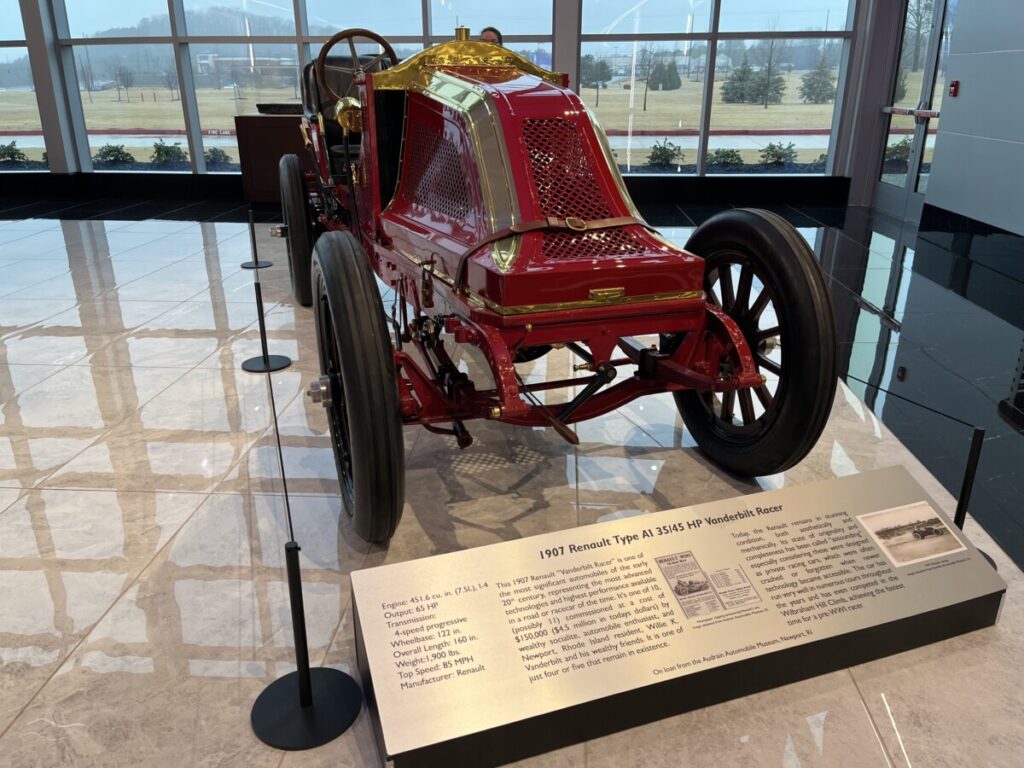
Car enthusiast Willy K. Vanderbilt even commissioned Renault, winner of the 1906 Grand Prix, for 10-12 cars for his friends at a cost of $150,000 in 1907. Today, only a handful of these Vanderbilt Racers still exist.
Another car in the exhibit included the 1909 Alco “Black Beast Racer” which won the Vanderbilt Cup in both 1909 and 1910. Begun in 1904 by Vanderbilt and AAA, the Vanderbilt Cup was the first international auto race in the US and was held in Long Island from 1904-1910.
Microcar Marvels Special Exhibit
If you think Smart Cars are a new trend, think again. With high gasoline prices after WWII, European drivers sought more fuel-efficient cars. Gaining popularity from 1945-1965, these microcars are sometimes called bubble cars. The aptly named bubble cars resembled something out of a cartoon.
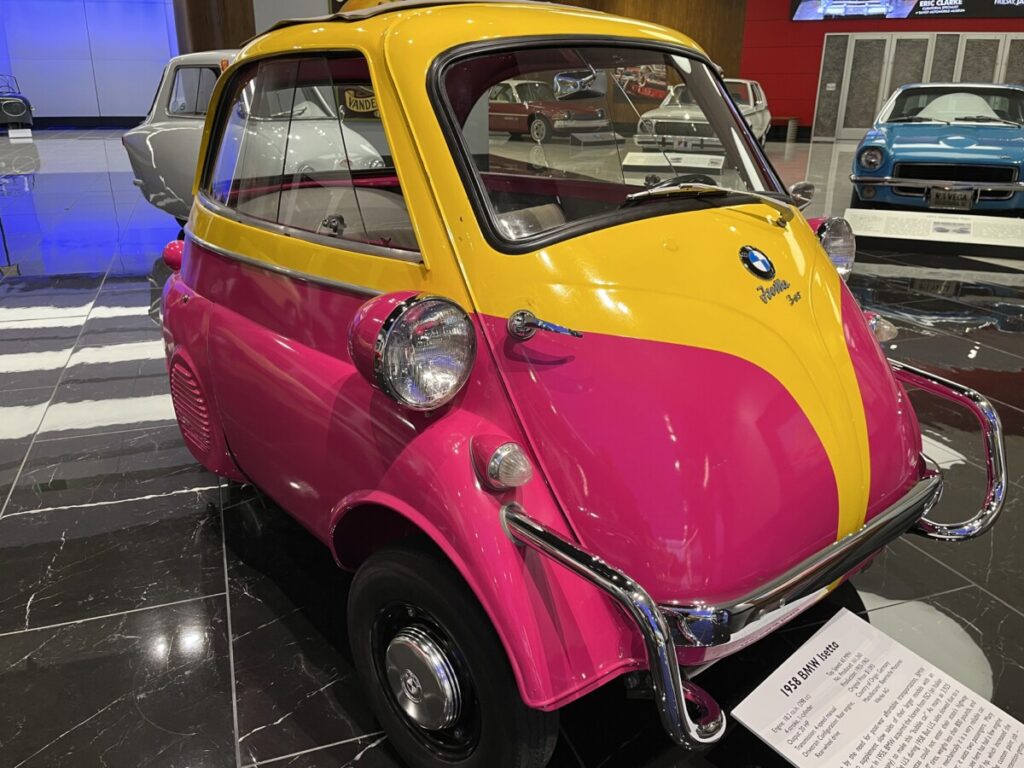
I loved the BMW Isetta on display. The microcar featured a front opening door, adapted from a refrigerator door, and measured only 7.5 feet in length. A canvas sunroof allowed an additional opening for safety reasons. Made from a motorcycle engine, the Isetta could reach speeds close to 50 mph, but only held about three gallons of fuel.
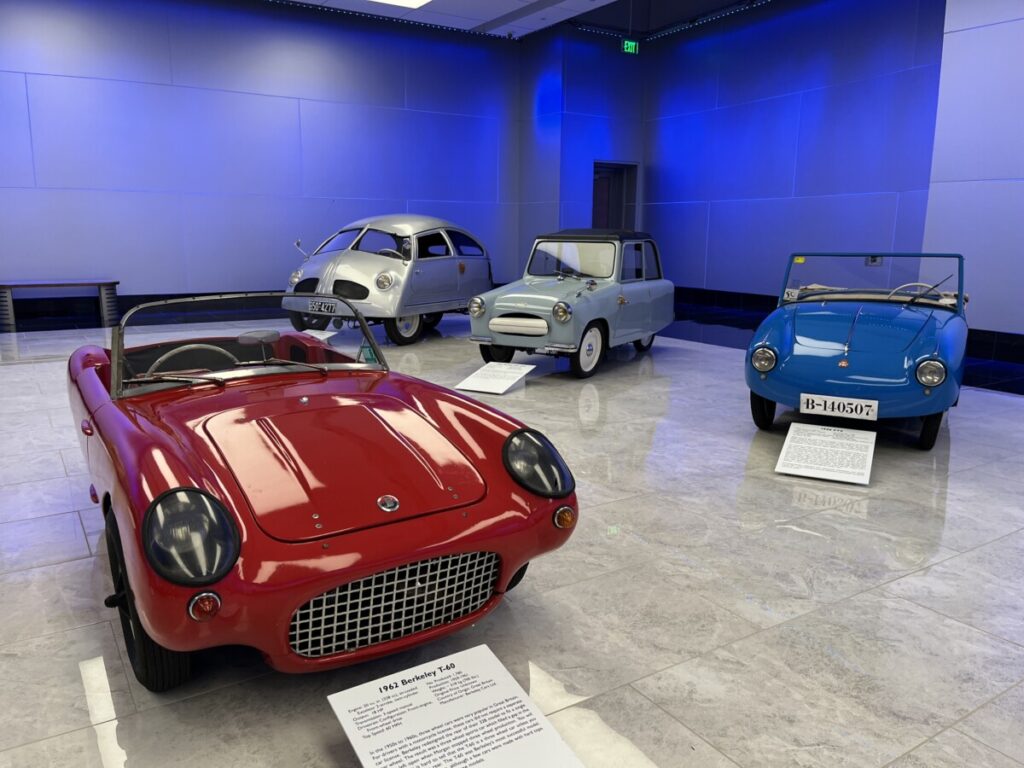
Other microcars sported only three wheels such as the sporty 1962 Berkely T-60, the 1957 Messerschmitt, and the 1964 Scootacar MKII. These found popularity in the UK where drivers only needed a motorcycle license to operate.
Built for a Crisis Special Exhibit
While microcars took over the European markets in the 50s and 60s, US car manufacturers produced bigger, gas-guzzling cars such as the Chevy Bel Air, Cadillac Coupe de Ville, and Lincoln Continental. When the Energy Crisis hit the US in the 1970s, North American manufacturers introduced smaller cars to compete with more fuel-efficient imports.
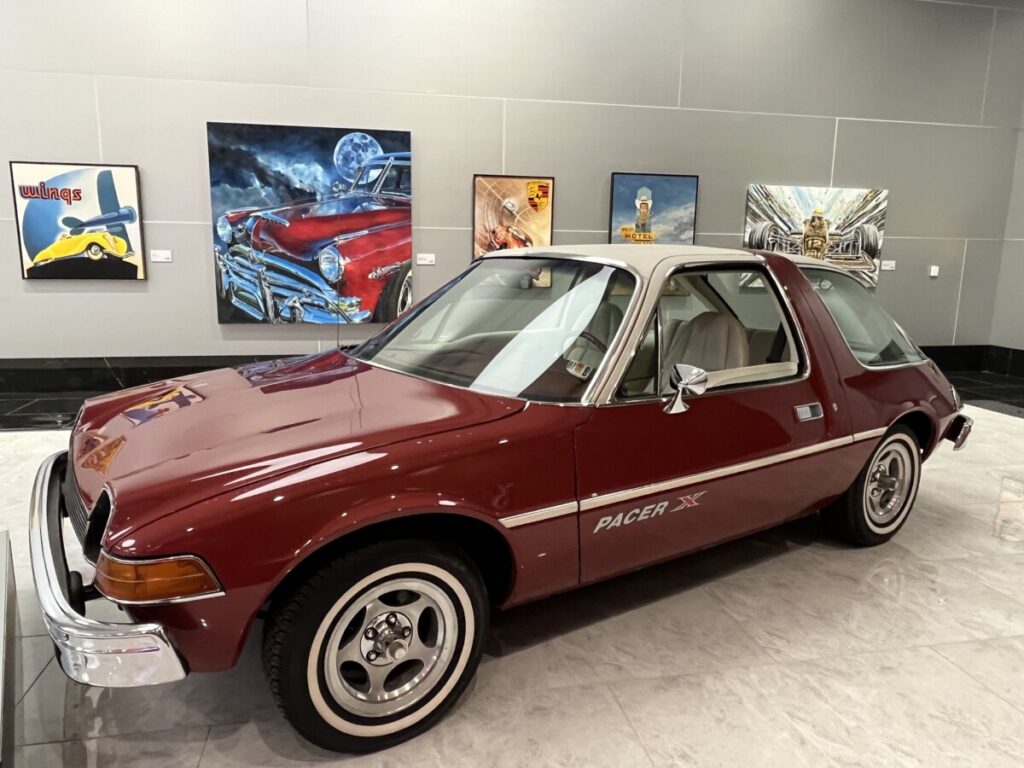
If you think of all the ugly cars in the 1970s, they probably fit this category. There’s the 1975 AMC Pacer and the 1974 Gremlin with two doors and a hatchback. Subcompact vehicles include the 1971 Chevrolet Vega, the 1972 Ford Pinto, and the 1976 Chevrolet Chevette.
In this gallery and the next, we noticed the artwork on the walls.
Fabulous Fins – Special Exhibit
When US manufacturers built bigger cars in the 1950s, they made small annual design changes to encourage new car demand. To correspond with the country’s fascination with the Jet Age, cars came on the market with fins resembling jet engine stabilizers.
Savoy credits the design to GM’s Frank Hershey who got the idea after a visit to Selfridge Air Force Base. Tailfins began appearing on Cadillac models in 1948 and soon other manufacturers followed. By the end of the 1950s, even the 1959 Chevrolet El Camino, a pick-up truck, sported fins.
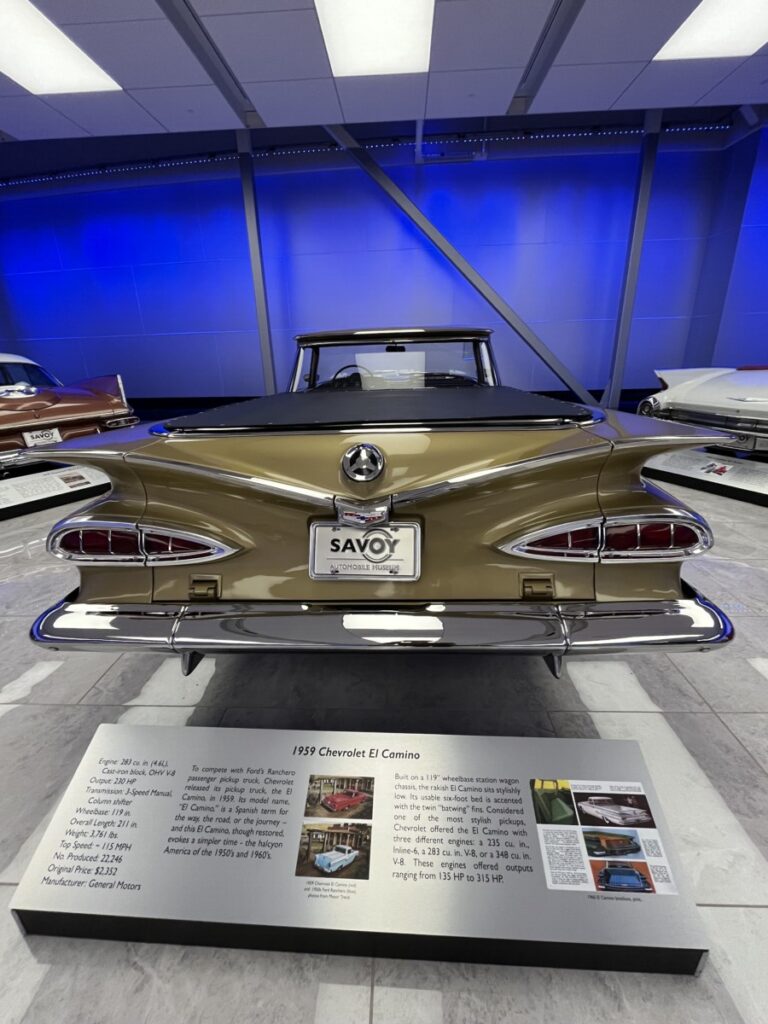
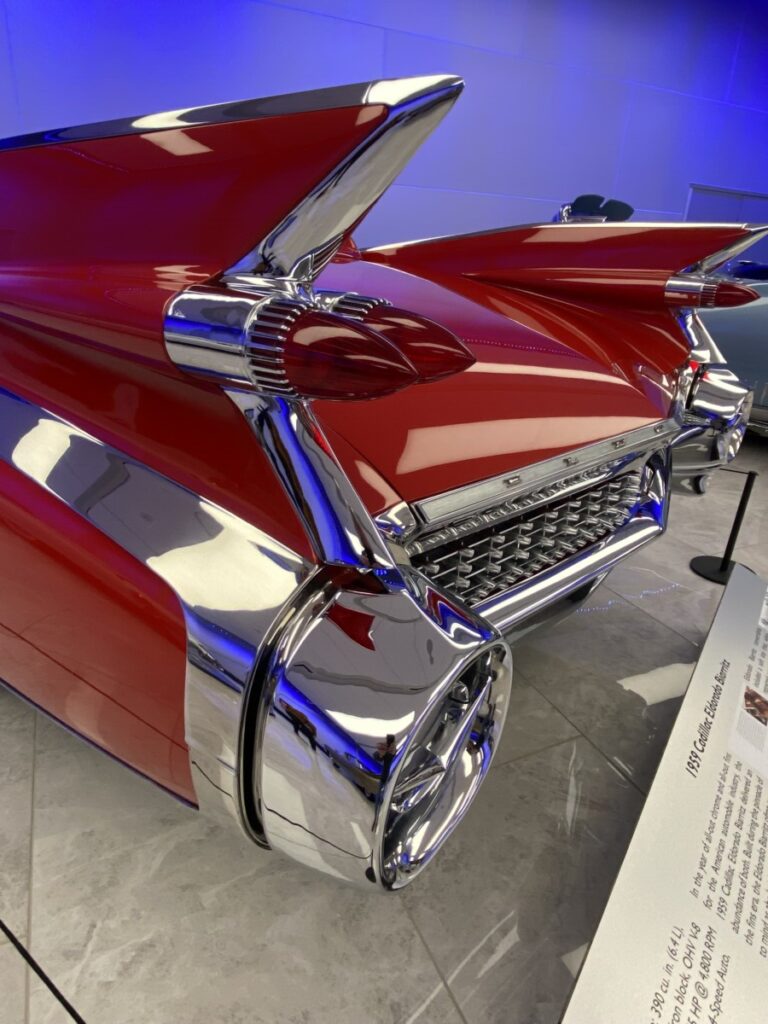
As one of the most expensive US cars in 1959, the Cadillac Eldorado Biarritz epitomized luxury and stretched out over 18 feet with its classic tailfin design. Other examples of tailfin cars at the exhibit were the 1957 Chevrolet Bel Air, the 1956 Lincoln Premiere Convertible, and the 1957 Studebaker Golden Hawk.
Permanent Collection
Lastly, we explored Savoy’s permanent collection of cars. What surprised me was the number of ashtrays inside each vehicle. Walking over to the 1948 Chrysler Town and Country Sedan (affectionately called the Woody), we passed a shiny1932 Buick Model 67. Found in a warehouse in a state of disrepair, the car was restored over 15 years ago to its former splendor. I noticed side mirrors attached to the spare tires on each side of the car. Flat tires were common due to rough or unpaved roads.
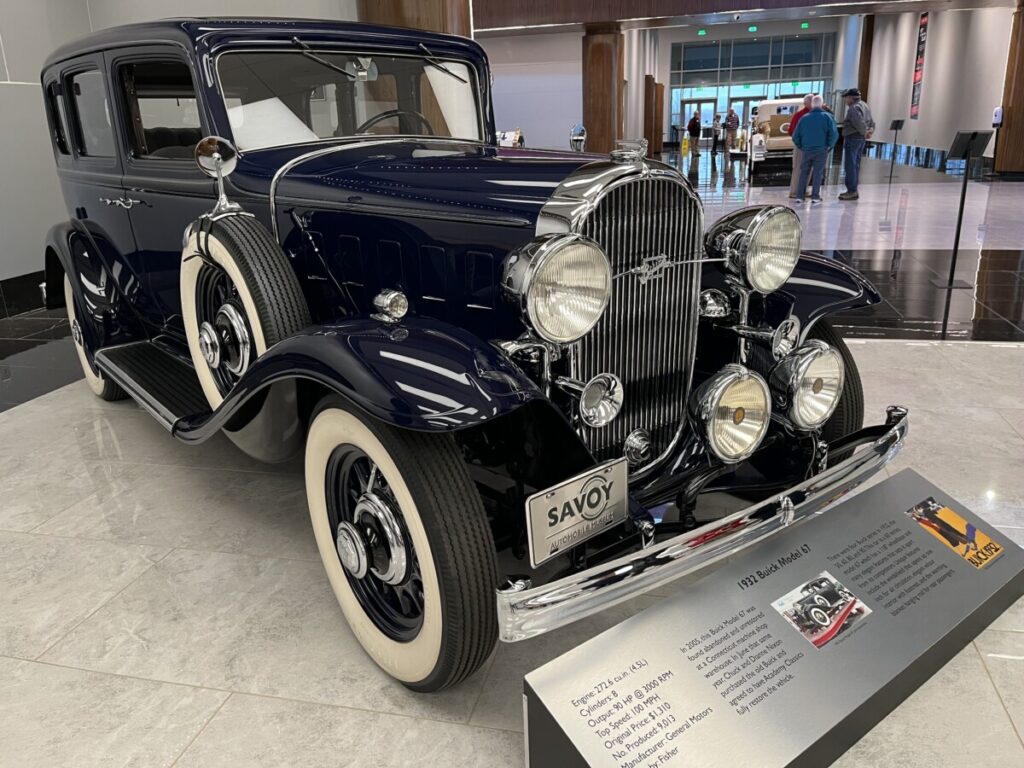
With so many cars in the collection, Savoy rotates its inventory periodically. Of particular note, we saw a 1934 Chrysler Airflow Series CU that resembled the Art-Deco Chrysler Building built just a few years earlier. Although one of the first aerodynamic cars, consumers didn’t like the style and Chrysler discontinued the model after 1937. Another flop, the 1959 Esdel Corsair Convertible sat near a stylish 1954 Kaiser Darrin Series 161 Roaster with sliding side doors.
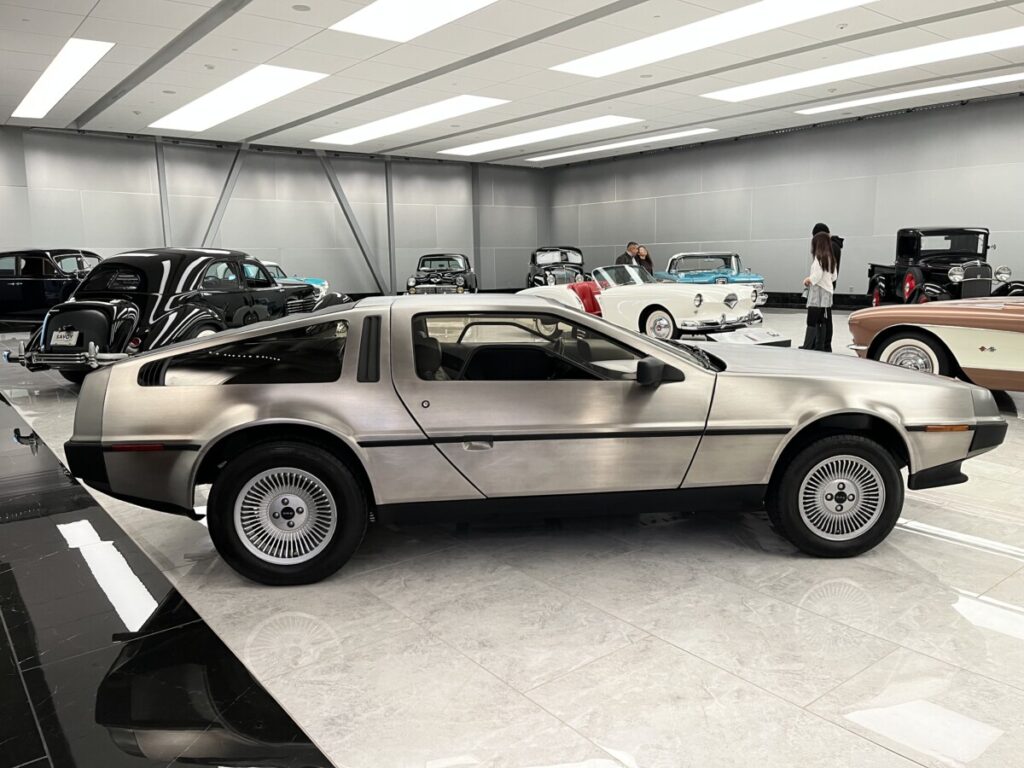
The highlight for me was the 1981 Delorean. I remember getting dropped off at school one morning when I saw a car open up like a huge bird. I did a double take and a student literally climbed out (not stepped out) of her father’s Delorean. Later the car played a prominent role in “Back to the Future.” Although the car resembles ugly stainless steel kitchen appliances, it brought back fun memories.
Conclusion
In addition to car galleries, Savoy offers a restaurant and gift shop. Also, a theater hosts lectures and car-themed movies such as “Chitty Chitty Bang Bang,” “Smokey and the Bandit,” and “Back to the Future” on select days. Although the museum takes only about an hour to visit, the admission is reasonable.
For more information, click the website here.

